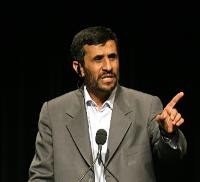In the run-up to the next round of negotiations between Iran and the P5+1 group on May 23 in Baghdad, reports have suggested that Tehran is prepared to make substantive concessions on its uranium enrichment program. Political paralysis in Tehran, however, will be an obstacle to reaching any definitive decision, meaning the Baghdad talks could prove as inconclusive as previous ones.
Not that Iran doesn’t need a deal. Crude oil exports are at a 20-year low due to the threat of U.S. financial sanctions on third-party purchasers. Domestic supplies of gasoline are in short supply, too, as rising sanctions prevent augmentation of Iran’s refining capacity. The domestic cost of fuel for automobiles has been rising rapidly and is expected to peak at 70 percent above current levels. Management inefficiencies and sanctions also constrict the flow of technology to enhance other sectors of Iran’s economy, from small electronics manufacturing to heavy construction projects, and have pushed unemployment to more than 25 percent.
As job availability falls, the government has resorted to an ever-expanding system of cash subsidies doled out each month to more than 60 percent of the population. Per capita income has risen to the equivalent of $13,000 as a result. Yet as more rials flood the market, inflation has skyrocketed to 26.5 percent officially and at least 50 percent in real value terms. Food prices have risen between 28 percent and 146 percent, depending on the item. Stockholders and bank account holders are demanding that dividends and interest be paid in gold and U.S. dollars rather than rials, which have lost 50 percent of their value in recent months. So weak is the economy and uncertain the cash flow that, according to the central bank, 12.5 percent of all checks bounce each day.

